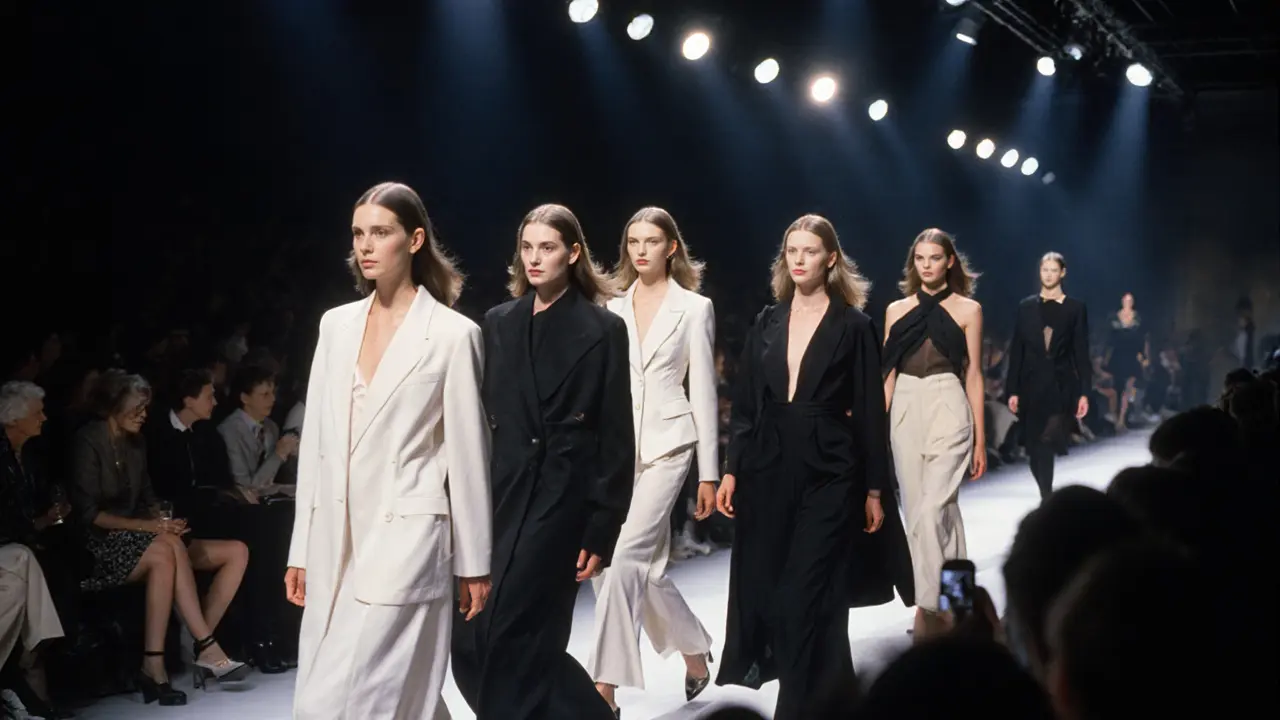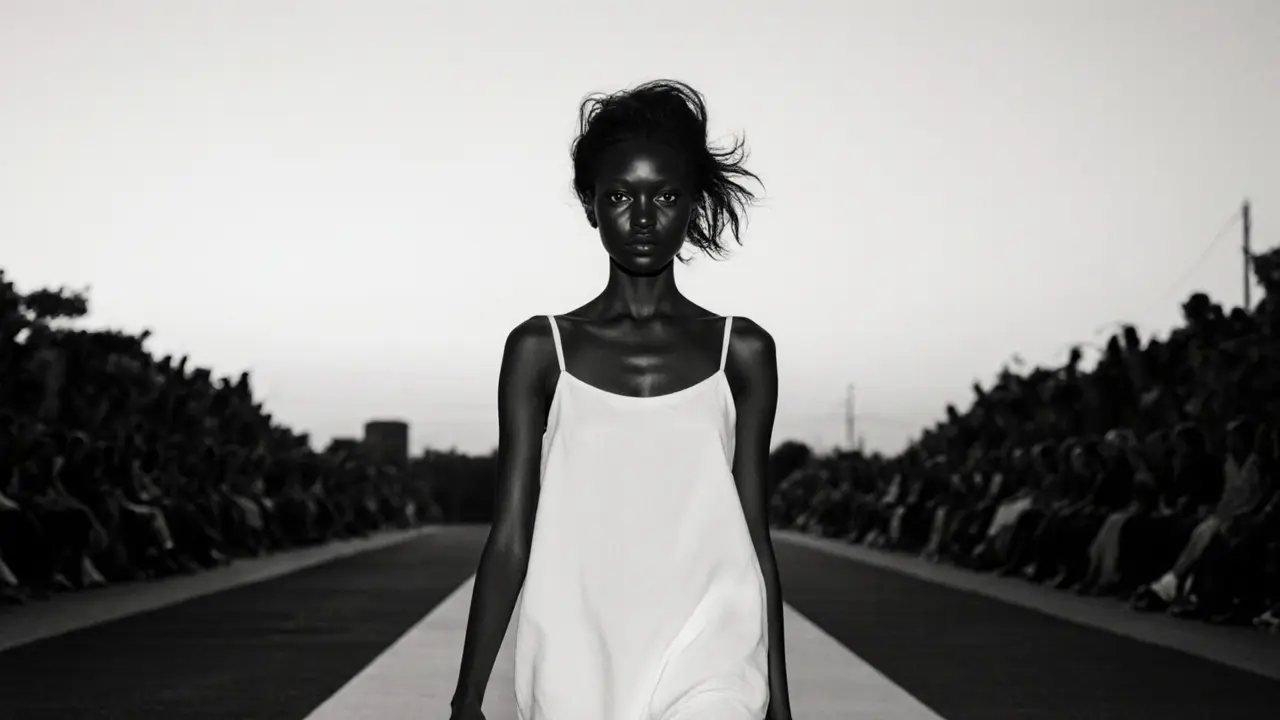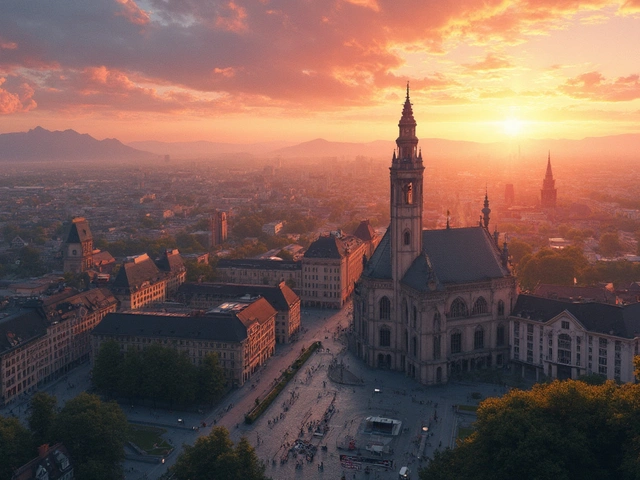
Supermodels aren’t just tall women walking runways. They’re cultural forces who changed how the world sees beauty, power, and confidence. In the 1980s and 90s, names like Naomi Campbell, Cindy Crawford, and Linda Evangelista didn’t just wear clothes-they defined eras. Their faces were on magazine covers, TV commercials, and billboards across the globe. This wasn’t just modeling. It was stardom with a runway.
What Makes a Supermodel?
A supermodel isn’t just someone who gets booked for a lot of jobs. It’s someone who breaks through the noise and becomes a household name. These women commanded six-figure contracts before most people knew what a six-figure salary meant. They didn’t just model for Calvin Klein or Versace-they became the face of the brand. Their names sold products. Their expressions told stories.
The term "supermodel" was coined in the 1980s, but it wasn’t until the late 80s and early 90s that the role exploded. Before that, models were background figures-beautiful, yes, but anonymous. Then came the era where they were interviewed on late-night TV, starred in music videos, and even launched their own fragrance lines. Linda Evangelista famously said, "We don’t wake up for less than $10,000 a day." That wasn’t bragging. It was the new standard.
The Anatomy of Grace and Glamour
Grace isn’t just poise. It’s the quiet control in a glance, the way a shoulder turns just so under studio lights, the stillness between steps that makes a photo unforgettable. Glamour isn’t glitter or makeup. It’s presence. It’s the aura that says, "I belong here," even when you’re standing next to a million-dollar diamond necklace.
Naomi Campbell’s walk wasn’t just about stride length. It was rhythm. It was attitude. She moved like she owned the floor, even when she was just 16. Cindy Crawford’s mole wasn’t hidden-it was celebrated. That single mark became one of the most copied beauty features in history. These women didn’t conform to a mold. They rewrote it.
Photographers like Peter Lindbergh and Richard Avedon didn’t just shoot them-they collaborated. Lindbergh’s black-and-white images stripped away makeup and artifice, showing raw humanity. That’s when supermodels became more than models. They became icons of authenticity in a world obsessed with perfection.

How the Industry Changed
The rise of supermodels changed the fashion business from the inside out. Designers started writing contracts with models by name. Agencies competed to sign them. Magazines fought over exclusive covers. By 1990, the top five supermodels earned more than most Fortune 500 CEOs. Forbes didn’t track models before then. After 1990, they did-and they stayed on the list for years.
TV changed everything too. Supermodels appeared on sitcoms, talk shows, and even reality TV before the genre was called that. Tyra Banks hosted her own talk show in the early 2000s. Elle Macpherson became "The Body" and turned her physique into a brand. These weren’t side gigs-they were careers built on the foundation of modeling.
By the mid-2000s, the model-as-celebrity model had shifted. Social media gave rise to influencers, and the gatekeepers of fashion-editors, agents, photographers-lost some control. But the legacy of supermodels didn’t vanish. It evolved.
Modern Supermodels and the New Rules
Today’s top models still carry the torch. Gigi Hadid, Bella Hadid, and Kendall Jenner don’t just walk runways-they run empires. They launch cosmetics lines, appear on Netflix documentaries, and have millions of followers on Instagram. But their power isn’t just in numbers. It’s in influence.
They speak out on body diversity, mental health, and racial representation. Adwoa Aboah founded Gurls Talk, a platform for young women to share their struggles. Ashley Graham became the first plus-size model on the cover of Sports Illustrated Swimsuit Issue-and she didn’t just break a barrier. She redefined it.
These women don’t wait for permission. They create their own platforms. They work with brands that align with their values. They’re not just faces. They’re CEOs of their own image.

Why Grace Still Matters
Some say glamour is dead. That the internet killed mystery. But look closer. When a model like Adut Akech walks in silence down a runway, eyes forward, posture perfect, the room still holds its breath. That’s not just technique. That’s grace.
It’s in the way she carries herself-not to impress, but to embody. Not to be seen, but to be felt. That’s what the original supermodels taught us: beauty isn’t about being perfect. It’s about being powerful.
Today’s models don’t need magazines to be famous. But they still need the same thing the 90s icons had: authenticity, discipline, and an unshakable sense of self. The runway is no longer the only stage. But the rules of grace? Those haven’t changed.
The Legacy Lives On
Supermodels didn’t just wear clothes. They changed the way we see women in power. They turned modeling from a job into a movement. They proved that a woman could be beautiful, intelligent, and in control-all at once.
Today, young girls in small towns around the world look at photos of Naomi Campbell or Iman and think, "That could be me." And it can be. Not because they’re tall or thin or flawless. But because they dared to believe they belonged.
The glamour of supermodels wasn’t in the diamonds or the designer gowns. It was in the quiet certainty that they were more than a model. They were legends. And that’s a legacy no algorithm can erase.
Who were the original supermodels?
The original supermodels emerged in the late 1980s and early 1990s. Key figures include Naomi Campbell, Cindy Crawford, Linda Evangelista, Claudia Schiffer, and Tatjana Patitz. These women dominated fashion magazines, walked for top designers, and earned unprecedented paychecks-often over $10,000 per day. They were the first models to become global celebrities, appearing on TV, in ads, and even launching their own brands.
What’s the difference between a model and a supermodel?
A model works in fashion, appearing in editorials, campaigns, or runway shows. A supermodel transcends the industry. They become household names, command top-tier contracts, appear in mainstream media, and often launch their own businesses. Supermodels are cultural icons-not just workers in fashion. Their influence extends beyond runways into music, film, and social movements.
Are supermodels still relevant today?
Yes, but their role has evolved. Today’s supermodels like Gigi Hadid, Kendall Jenner, and Adwoa Aboah use social media to build direct connections with fans. They’re not just hired by brands-they partner with them. Many launch their own product lines, advocate for social causes, and produce content. The runway is no longer the only stage, but the power and influence of a supermodel remain strong.
Why did supermodels become so famous in the 90s?
The 90s were a perfect storm: fashion magazines were at their peak, MTV and cable TV gave models unprecedented visibility, and designers like Versace and Calvin Klein created iconic campaigns that turned models into stars. Agencies like IMG and Women Management aggressively promoted their top talent. Media coverage turned them into celebrities, and their personal lives became public fascination. They weren’t just models-they were the new rock stars.
How did supermodels change beauty standards?
Supermodels initially reinforced a narrow ideal-tall, thin, and often white. But over time, they also challenged it. Naomi Campbell broke barriers as one of the first Black supermodels. Iman redefined African beauty on global stages. Today’s models like Ashley Graham and Paloma Elsesser are expanding the definition of beauty to include diverse body types, ethnicities, and gender expressions. Supermodels didn’t just follow trends-they started them.



